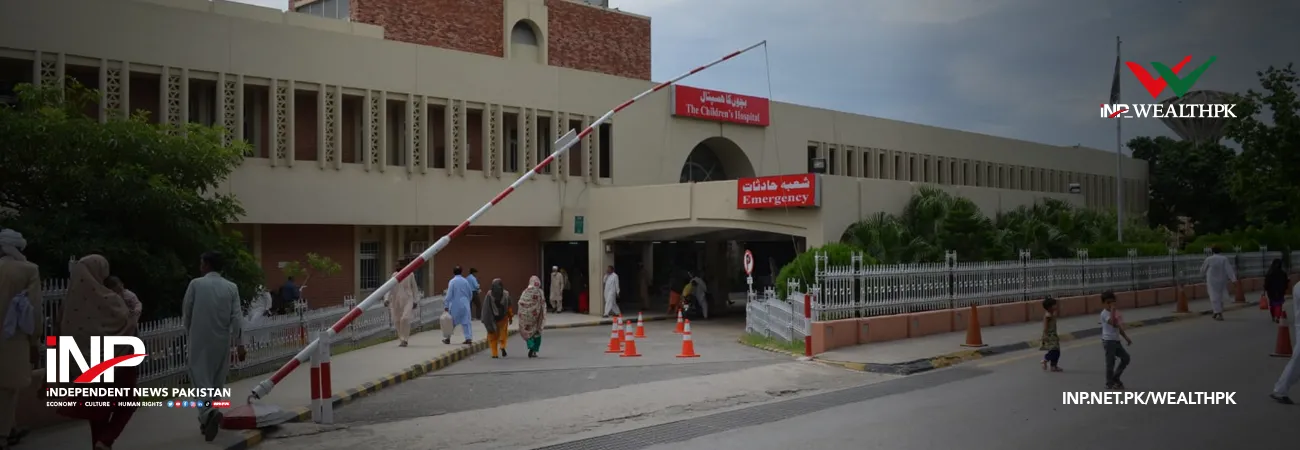INP-WealthPk
By Hamid Mahmood ISLAMABAD, Mar. 22 (INP-WealthPK): Special Economic Zones (SEZs) are still frequently employed in all areas to pursue a variety of economic policy goals with various degrees of success. The closeness of SEZs to the urban centres has been found to be a crucial predictor of their success. Simultaneously, as policymakers strive to achieve goals connected to the Sustainable Development Goals (SDGs), the success of SEZs will be increasingly characterized in terms of how they might contribute to those goals, and specifically to sustainable urbanization. Economic corridor development (ECD) may be an integrated spatial strategy and successful development instrument when planned and implemented appropriately, as evidenced by Asian nations' experience. The ECD helps promote industrial growth, create jobs, upgrade infrastructure, align infrastructure development with urban and social agglomerations, unify domestic markets, and link production hubs to global value chains and production networks. It necessitates the integration and synchronization of hard infrastructure expenditures, such as transportation, with soft infrastructure investments, such as trade. Economic corridors may boost corporate productivity and competitiveness while also expanding access to national and global markets, supporting the manufacturing and export-based industrial growth for job creation and poverty reduction. While Pakistan's cities are reasonably lively, they are getting more complicated and crowded. It is critical to identify and solve the fundamental obstacles to developing well-performing urban centres and integrating infrastructure public service systems to support industrial growth in order to face the difficulties of rapid urbanization, and particularly to succeed in ECD. According to the WealthPK research, the Pakistan Bureau of Statistics (PBS) revealed that between 1980 and 2020, Pakistan's average yearly urbanization rate was 3.4%, second only to Bangladesh among South Asian nations. According to the United Nations Department of Economic and Social Affairs (UNDESA) report 2019, Pakistan's urbanization rate is expected to continue strong and exceed 50% in FY2025. In Pakistan, there are three tiers of local government: district, tehsil/town, and union council, each with its own set of tasks and responsibilities. Aside from the three-tiered structure, various parallel institutions function in most cities' urban spaces. Development authorities are independent groups under provincial governments tasked with creating action plans for the future development of their particular cities. Urbanization and industrialization are treated as independent processes in Pakistan's governance structure, necessitating different management systems. Local governments seldom consider local economic growth to be part of their duty, and hence do not aggressively support industrialization. As a result, Pakistan has failed to fully realize the socio-economic gains that come with urbanization. Because of population constraints on land, housing, transportation, water and sanitation, solid waste, and education infrastructure and services, urban areas are crowded. These issues are at the root of Pakistan's cities' relative lack of liveability. Pakistan's policies have favoured unplanned urbanization and dispersed industry in general. Pakistan should undertake policy measures to relieve current and future congestion problems, leverage agglomeration economies, and unlock the enormous untapped potential of its cities while ensuring high inclusive growth. This is particularly significant since the SEZs are anticipated to increase the number of individuals migrating to urban and industrial regions in search of better work prospects. The following strategic thrusts might be used to guide policy initiatives. Dependable and inexpensive public services must be ensured, such as safe drinking water, sanitation, solid waste management, education, public transportation, skill development, and social infrastructure. These amenities are necessary for ECD to thrive by attracting companies and labour to both the current and future industrial centres. To unify the urban and industrial development strategy, the duties and responsibilities of the federal, provincial, and municipal governments must be streamlined. This will help improve service delivery by strengthening urban functions and promoting interagency collaboration among service providers. To generate synergy between urban and industrial growth processes, SEZs must be used as spatial economic units. Industrial and urban growth in SEZs has become one of the most common ways to expand metropolitan areas. SEZs may have a big impact on city dynamics by pushing urban expansion and bringing new economic possibilities, as well as residential and commercial development. Well-designed urban planning therefore can provide many benefits to SEZs, thus contributing to its success.













